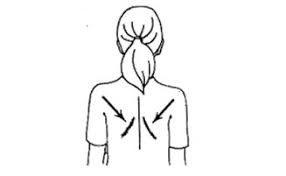Shoulder Impingement Treatment
Physiotherapy for Shoulder Impingement Syndrome
Shoulder impingement syndrome is a common condition that affects the rotator cuff tendons of the shoulder. It usually results from the repetitive overhead activities, stiff thoracic spine, shoulder muscle imbalance where internal rotators are tighter than external. This syndrome causes compression and irritation of the tendons and bursa and causes pain and weakness in the shoulder. Often patients experience pinching when moving their arm out to the side.

Fortunately, physiotherapy can help with the management of shoulder impingement syndrome. Physiotherapy is a non-invasive, cost-effective, and proven way to manage shoulder impingement syndrome. In this article, we will discuss the role of physiotherapy in shoulder impingement syndrome and the different physiotherapy techniques that can be useful.
The role of physiotherapy
Physiotherapy plays a crucial role in the management of shoulder impingement syndrome. The primary goal of physiotherapy is to alleviate pain, improve range of motion and strengthen the rotator cuff muscles. The following are some of the benefits of physiotherapy in shoulder impingement syndrome:
1.Pain relief: Physiotherapy techniques such as ice and heat therapy, kinesiotape of the shoulder to support it.

2. Range of motion: Range of motion exercises can help improve the flexibility of the shoulder joint, thereby reducing stiffness and pain. Thoracic (mid back) mobilisation, scapula mobility, stretches to pec and lat muscles.
3. Strengthening exercises: Strengthening exercises can help increase the strength and endurance of the rotator cuff muscles, and scapula postural muscles thereby improving shoulder stability and reducing the risk of further injury.

4. Postural exercises: Correcting postural imbalances can help reduce the strain on the shoulder joint and rotator cuff tendons.
5. Education: A physiotherapist can educate you about the condition, give you advice on activities to avoid, and teach you proper techniques for lifting and carrying objects.
Physiotherapy techniques for Shoulder Impingement Syndrome
Physiotherapy can use different techniques to manage shoulder impingement syndrome, including:
1. Range of motion exercises: These exercises help to increase the mobility of the shoulder joint and improve flexibility. Range of motion exercises include internal and external rotation, flexion, abduction, and extension.
2. Strength exercises: These exercises target the rotator cuff muscles and improve shoulder stability. Strengthening exercises include external rotation, scapular stabilization, and Rows.

3. Manual therapy: This technique involves hands-on treatment to reduce pain and improve joint mobility. It includes massage or pec major, minor, subscapularis, thoracic, neck and shoulder joint mobilisation.

Additional assessment and treatment
Physios can also refer for x-rays to check your bones are ok, and ultrasound scans as well to check tendons and bursa and cortisone injections if a bursa (sack of fluid) is inflamed and pinched.
Preventing Shoulder Impingement Syndrome
Prevention is always better than cure. Here are some tips to prevent shoulder impingement syndrome:
1. If doing lots of activities with arms forward – eg driving, computer use, chest exercises, set your shoulder blades back for 10 seconds

2. Posture: Pay attention to your posture to ensure it is correct when sitting or standing.
3. Avoid overuse: Avoid repetitive overhead activities that cause shoulder strain.
4. Strengthen shoulder postural muscles: A strong middle back and shoulder external rotators
5. When doing gym exercises do more mid backs rows than chest press exercises.
Conclusion
Shoulder impingement syndrome can be a debilitating condition, but it can be managed with physiotherapy. Physiotherapy techniques such as range of motion exercises, strength exercises, manual therapy, k-tape help alleviate pain, improve mobility, and prevent further injury. It is essential to consult a physiotherapist to develop an individualised treatment plan that meets your specific needs. With proper care and commitment to exercise, you can successfully manage shoulder impingement syndrome and regain your shoulder’s full function.
By Jaydn Nixon (BHSc, Physiotherapy)
Need physio help? Book online at: https://nzappts.gensolve.com/recharge_physio
